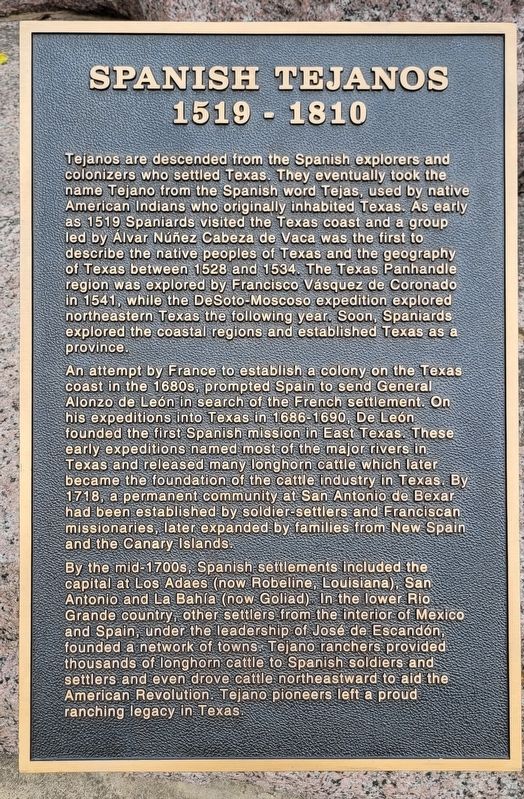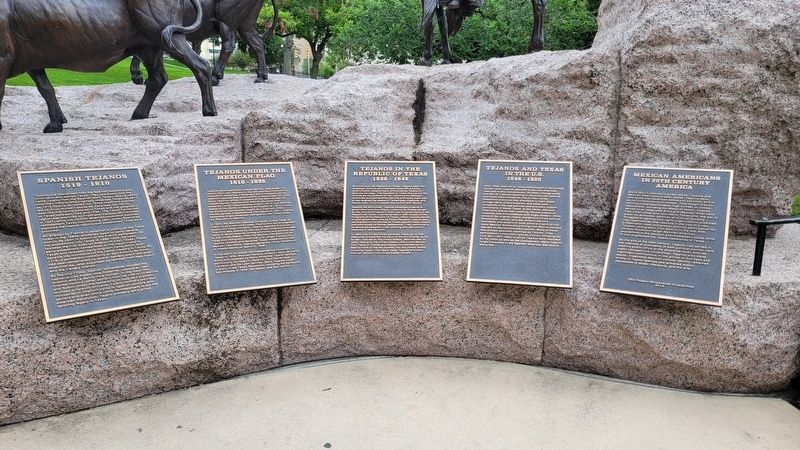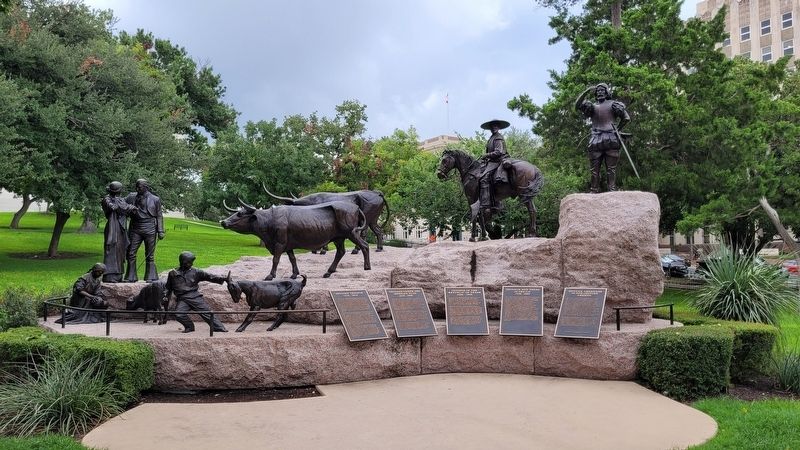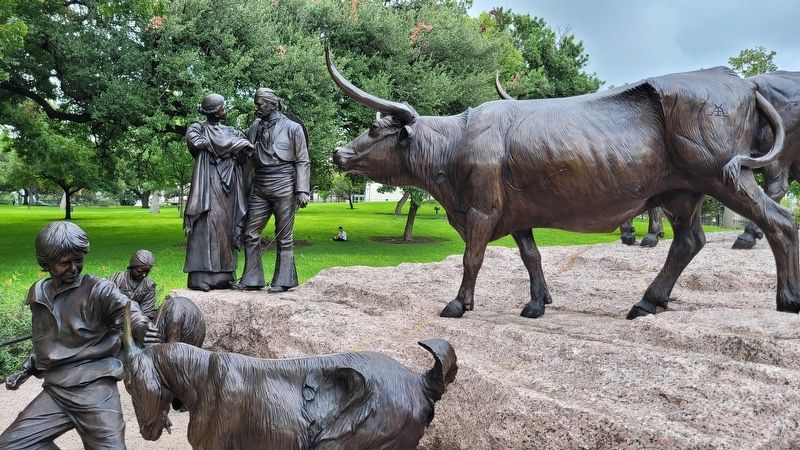Downtown Austin in Travis County, Texas — The American South (West South Central)
Spanish Tejanos
1519 - 1810
An attempt by France to establish a colony on the Texas coast in the 1680s, prompted Spain to send General Alonzo de León in search of the French settlement. On his expeditions into Texas in 1686-1690, De León founded the first Spanish mission in East Texas. These early expeditions named most of the major rivers in Texas and released many longhorn cattle which later became the foundation of the cattle industry in Texas. By 1718, a permanent community at San Antonio de Bexar had been established by soldier-settlers and Franciscan missionaries, later expanded by families from New Spain and the Canary Islands.
By the mid-1700s, Spanish settlements included the capital at Los Adaes (now Robeline, Louisiana), San Antonio and La Bahía (now Goliad). In the lower Rio Grande country, other settlers from the interior of Mexico and Spain, under the leadership of José de Escandón, founded a network of towns. Tejano ranchers provided thousands of longhorn cattle to Spanish soldiers and settlers and even drove cattle northeastward to aid the American Revolution. Tejano pioneers left a proud ranching legacy in Texas.
Erected 2012 by Tejano Monument Committee.
Topics. This historical marker is listed in these topic lists: Animals • Colonial Era • Exploration • Hispanic Americans. A significant historical year for this entry is 1519.
Location. 30° 16.38′ N, 97° 44.417′ W. Marker is in Austin, Texas, in Travis County. It is in Downtown Austin. Marker can be reached from the intersection of East 11th Street and Congress Avenue. The marker is located in the southeast section of the Texas State Capitol grounds by the south entrance gate on the Tejano Monument. Touch for map. Marker is at or near this postal address: 100 East 11th Street, Austin TX 78701, United States of America. Touch for directions.
Other nearby markers. At least 8 other markers are within walking distance of this marker. Tejanos Under the Mexican Flag (here, next to this marker); Tejanos in the Republic of Texas (here, next to this marker); Tejanos and Texas in the U.S. (here, next to this marker); Mexican Americans in 20th Century America (here, next to this marker); Bicentennial Fountain (within shouting distance of this marker); Southern Confederacy Monument (within shouting distance of this marker); Capitol Fence (within shouting distance of this marker); Texas Highway Department (within shouting distance of this marker). Touch for a list and map of all markers in Austin.
Also see . . .
1. History of Mexican Americans. Wikipedia
The first Spanish missions in Texas were founded in the 1680s around present-day San Angelo, El Paso and Presidio, near the New Mexico settlements. In the early-1680s, however, conflict emerged in New Mexico, as the Pueblo people rebelled against the Spanish occupation. Spanish colonization nevertheless persisted, and in 1690, new missions were built in East Texas by Alonso de León after the Spanish discovered the French had been encroaching into the territory. In Arizona, the first Spanish settlements were founded in 1691 by the Italian Jesuit missionary Father Eusebio Francisco Kino. California's first permanent Spanish settlement wasn't established until 1769, when the Presidio of San Diego was founded by Father Junipero Serra and his accompanying Spanish soldiers. This marked the beginning of the Mission system, an era infamous for its brutality toward Indigenous peoples.(Submitted on September 13, 2022, by James Hulse of Medina, Texas.)
2. Álvar Núñez Cabeza de Vaca. Wikipedia
Álvar Núñez Cabeza de Vaca was a Spanish explorer of the New World, and one of four survivors of the 1527 Narváez expedition. During eight years of traveling across what is now the US Southwest, he became a trader and faith healer to various Native American tribes before reconnecting with Spanish civilization in Mexico in 1536. After returning to Spain in 1537, he wrote an account, first published in 1542 as La relación y comentarios ("The Account and Commentaries"), which in later editions was retitled Naufragios y comentarios ("Shipwrecks and Commentaries"). Cabeza de Vaca is sometimes considered a proto-anthropologist for his detailed accounts of the many tribes of Native Americans that he encountered.(Submitted on September 13, 2022, by James Hulse of Medina, Texas.)
Credits. This page was last revised on February 1, 2023. It was originally submitted on September 12, 2022, by James Hulse of Medina, Texas. This page has been viewed 132 times since then and 26 times this year. Photos: 1, 2, 3, 4. submitted on September 13, 2022, by James Hulse of Medina, Texas.



